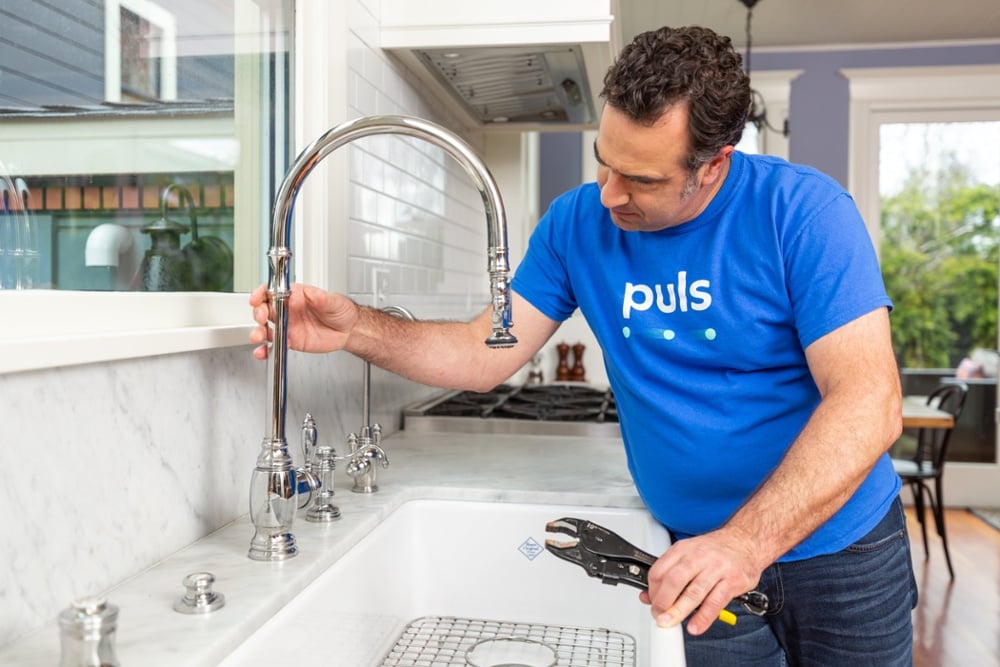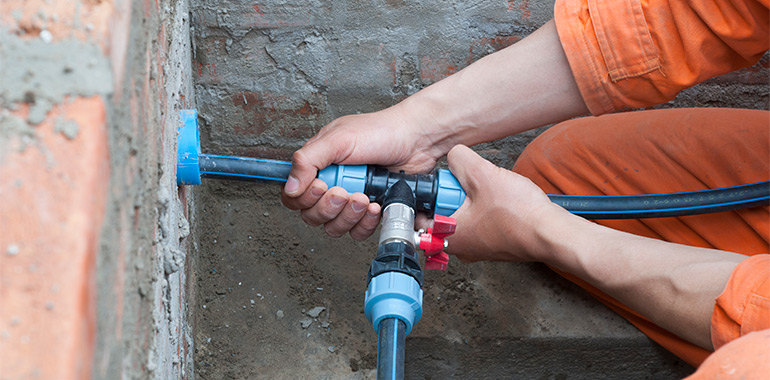We've stumbled upon this great article involving Why Do My Plumbing Pipes Make A Knocking Noise directly below on the internet and felt it made good sense to discuss it with you in this article.

To detect noisy plumbing, it is important to figure out very first whether the unwanted sounds take place on the system's inlet side-in various other words, when water is turned on-or on the drainpipe side. Noises on the inlet side have actually varied causes: too much water pressure, used shutoff and faucet parts, poorly attached pumps or other appliances, incorrectly positioned pipe fasteners, and also plumbing runs consisting of a lot of tight bends or various other limitations. Noises on the drainpipe side typically stem from inadequate place or, as with some inlet side sound, a design containing limited bends.
Hissing
Hissing noise that takes place when a faucet is opened slightly usually signals excessive water stress. Consult your regional water company if you suspect this issue; it will certainly have the ability to tell you the water pressure in your location and can set up a pressurereducing shutoff on the incoming water pipe if essential.
Thudding
Thudding sound, frequently accompanied by shuddering pipes, when a tap or appliance valve is switched off is a problem called water hammer. The noise as well as resonance are triggered by the resounding wave of pressure in the water, which unexpectedly has no location to go. Occasionally opening a valve that releases water quickly into an area of piping having a limitation, arm joint, or tee installation can generate the very same condition.
Water hammer can typically be treated by mounting fittings called air chambers or shock absorbers in the plumbing to which the issue shutoffs or faucets are connected. These gadgets enable the shock wave developed by the halted flow of water to dissipate airborne they have, which (unlike water) is compressible.
Older plumbing systems might have short vertical sections of capped pipeline behind wall surfaces on tap runs for the very same purpose; these can eventually loaded with water, lowering or damaging their performance. The treatment is to drain pipes the water supply entirely by shutting down the major water supply valve and opening up all taps. Then open the main supply valve and close the faucets one at a time, starting with the tap nearest the shutoff as well as ending with the one farthest away.
Babbling or Shrieking
Extreme chattering or shrieking that happens when a valve or faucet is turned on, and that usually disappears when the installation is opened fully, signals loose or malfunctioning inner components. The option is to replace the valve or tap with a brand-new one.
Pumps and also devices such as cleaning equipments and also dish washers can move motor noise to pipes if they are poorly attached. Connect such products to plumbing with plastic or rubber hoses-never rigid pipe-to isolate them.
Other Inlet Side Noises
Creaking, squeaking, scratching, breaking, and also touching generally are brought on by the development or tightening of pipes, typically copper ones supplying hot water. The sounds take place as the pipelines slide versus loosened fasteners or strike nearby house framing. You can often determine the area of the issue if the pipes are subjected; just follow the sound when the pipelines are making sounds. Probably you will discover a loosened pipeline hanger or a location where pipelines exist so near to floor joists or other framing pieces that they clatter versus them. Affixing foam pipeline insulation around the pipelines at the point of get in touch with must correct the issue. Be sure straps and wall mounts are safe and secure and also supply appropriate support. Where possible, pipe bolts must be connected to huge structural components such as structure walls instead of to mounting; doing so decreases the transmission of resonances from plumbing to surfaces that can enhance and move them. If connecting fasteners to framing is inescapable, cover pipes with insulation or other resistant material where they get in touch with fasteners, and also sandwich the ends of new bolts in between rubber washers when mounting them.
Correcting plumbing runs that struggle with flow-restricting tight or countless bends is a last hope that should be taken on only after consulting a proficient plumbing specialist. Unfortunately, this scenario is fairly usual in older homes that might not have been constructed with indoor plumbing or that have actually seen several remodels, specifically by novices.
Drain Noise
On the drainpipe side of plumbing, the principal goals are to remove surfaces that can be struck by dropping or hurrying water and to protect pipes to have inescapable sounds.
In new building and construction, bathtubs, shower stalls, bathrooms, and also wallmounted sinks and containers need to be set on or against durable underlayments to reduce the transmission of noise via them. Water-saving toilets and taps are much less noisy than traditional versions; mount them instead of older kinds even if codes in your location still permit utilizing older components.
Drains that do not run vertically to the basement or that branch right into straight pipe runs supported at floor joists or various other mounting present particularly bothersome sound problems. Such pipes are big sufficient to emit substantial vibration; they likewise bring substantial quantities of water, which makes the situation worse. In brand-new building and construction, define cast-iron soil pipes (the large pipes that drain pipes commodes) if you can manage them. Their massiveness consists of a lot of the sound made by water passing through them. Also, prevent directing drains in wall surfaces shown to rooms and also rooms where people gather. Walls including drainpipes ought to be soundproofed as was explained earlier, utilizing double panels of sound-insulating fiber board as well as wallboard. Pipelines themselves can be covered with unique fiberglass insulation created the purpose; such pipes have an impervious vinyl skin (sometimes containing lead). Outcomes are not constantly satisfactory.
WHY IS MY PLUMBING MAKING SO MUCH NOISE?
This noise indeed sounds like someone is banging a hammer against your pipes! It happens when a faucet is opened, allowed to run for a bit, then quickly shut — causing the rushing water to slam against the shut-off valve.
To remedy this, you’ll need to check and refill your air chamber. Air chambers are filled with — you guessed it — air and help absorb the shock of moving water (that comes to a sudden stop). Over time, these chambers can fill with water, making them less effective.
You’ll want to turn off your home’s water supply, then open ALL faucets (from the bathroom sink to outdoor hose bib) to drain your pipes. Then, turn the water back on and hopefully the noise stops! If you’re still hearing the sound, give us a call to examine further.
Whistles
Whistling sounds can be frustrating, as sometimes the source isn’t easily identified. However, if you can pinpoint which faucet or valve that may be the cause, you’ll likely encounter a worn gasket or washer — an easy fix if you replace the worn parts!Whistling sounds from elsewhere can mean a number of things — from high water pressure to mineral deposits. Your best plan of attack here is to give our plumbing experts a call. We’ll be able to determine where the noise is coming from and what the cause may be, then recommend an effective fix!
Cracks or Ticks
Cracking or ticking typically comes from hot water going through cold, copper pipes. This causes the copper to expand resulting in a cracking or ticking sound. Once the pipes stop expanding, the noise should stop as well.
Pro tip: you may want to lower the temperature of your water heater to see if that helps lessen the sound, or wrapping the pipe in insulation can also help muffle the noise.
Bangs
Bangs typically come from water pressure that’s too high. To test for high water pressure, get a pressure gauge and attach it to your faucet. Water pressure should be no higher than 80 psi (pounds per square inch) and also no lower than 40 psi. If you find a number greater than 80 psi, then you’ve found your problem!
Next step is to give us a call in order to install a pressure regulator. Trust us, you don’t want to wait to resolve this issue. Not only is the sound annoying, but high water pressure can be destructive to your home — including damaging certain appliances, like your washer and dishwasher.
Dripping
You might be accustom to the slow quiet drip your kitchen faucet makes. You might have even tuned out your bathroom sink dripping and drabbing all day long — but it’s time to find its cause.
A slow drip could signify a variety of easy to fix issues, such as a worn out O ring, or loose part. And by ignoring the drip, you could be wasting up to 2,000 gallons of water a year! So start conserving water — get it looked at ASAP.
https://www.pwessig.com/blog/2018/december/why-is-my-plumbing-making-so-much-noise-/

We hope you enjoyed our article about Diagnose Unwanted Plumbing Noises. Thanks for taking a few minutes to browse our content. If you appreciated our article kindly do not forget to pass it around. Thanks so much for going through it.
Book Appointment